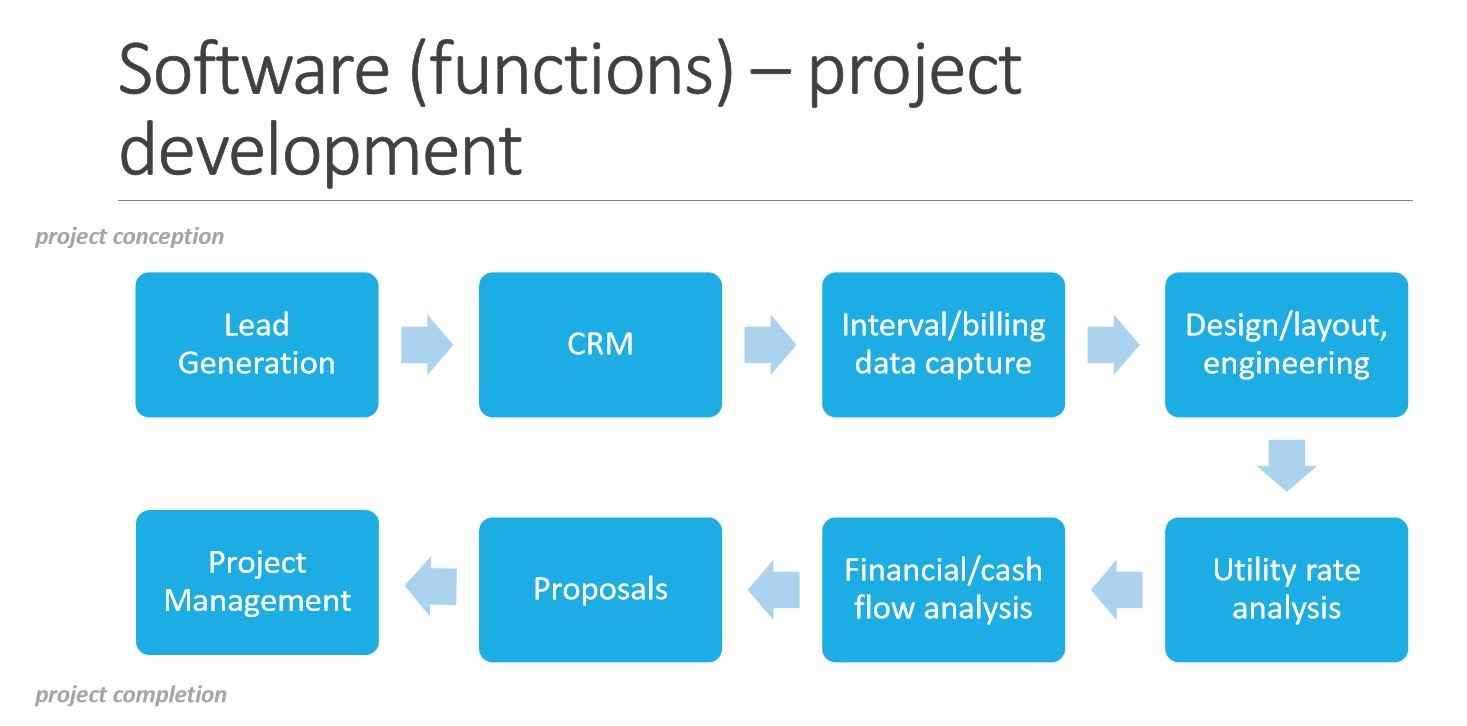How Software Can Facilitate the Next Wave of Solar Growth
Despite the solar market's impressive trajectory over the past decade, there is still a significant amount of growth needed before solar, and renewables in general, make up a substantial portion of our energy generation. As the solar market continues to mature, the policy landscape becomes increasingly complex, with the implementation of new regulations, Net Energy Metering (NEM) rules, and less favorable utility rate structures. This complicates the solar value proposition, and drives the need for increased sophistication in how solar project developers model their projects. Advanced software applications that are designed specifically for solar development activities offer powerful tools to accurately analyze solar projects, despite these complexities. Software platforms enable developers to identify multiple savings opportunities, optimize system specifications, effectively communicate the solar value proposition, and streamline the sales and project development process. As the solar market continues to evolve at a rapid rate, innovative software tools will play an important role in contributing to the next wave of growth.
The solar software landscape
There are a variety of software offerings for different stages of the solar project development process. Between project conception and completion, software platforms can serve several functions, including lead generation, CRM, solar system design, utility rate analysis, financial analysis, proposal generation, and project management. Each of these tasks is a fundamental step in the project development process. Financial analysis and proposal software platforms are particularly important, as they enable installers to extract all possible savings opportunities from a solar project and transparently present these findings to customers. This is especially vital today, since many policy changes have begun to erode the solar value proposition. By identifying and communicating the economic viability of solar projects, best-in-class software tools can play a significant role in facilitating the adoption of solar on a larger scale.
Sophisticated tools for a changing market
During the early days of the rooftop solar market, developers often utilized desktop software applications like Excel and Word to model projects and calculate savings. However, the complexity and rapidly changing nature of the industry have made it necessary to utilize tools specifically built for modeling solar project economics. Today's advanced financial analysis and proposal software applications, enable project developers to model all types of projects, and achieve a level of rigor and granularity in their analyses that isn't as feasible when done on spreadsheets. Sophisticated software platforms cohesively integrate all project inputs - from the specifics of the solar system design, to a customer's utility bill and energy use profile, to financial transactions and incentives - in order to generate a reliable analysis of a customer's proposed savings.
Generating an accurate savings analysis, and extracting every possible savings opportunity from a project, is becoming particularly vital since, in many regions, savings from solar don't pencil out to the same degree they did a few years ago (or even as recently as a few months ago). Take California as an example. As of July of this year, all three major utilities - Southern California Edison, San Diego Gas & Electric, and Pacific Gas & Electric - have transitioned to NEM 2.0, which lowers the compensation rate for the energy that is exported to the grid. As policy continues to change, project developers have to be particularly mindful to identify and optimize every single savings opportunity for their customers.
 Effectively proposing diverse value propositions
Effectively proposing diverse value propositions
As the savings opportunity from solar grows increasingly complicated, it becomes even more important to communicate multiple value propositions.One especially compelling value proposition, particularly for solar + storage projects, is the prospect of becoming energy independent, or "going off the grid." Deciding to go solar with storage can be more of an emotional decision than a financial one. Additionally, many customers may be motivated more by the environmental benefits of going solar, and the meaningful satisfaction of doing their part to reduce their carbon footprint, than in the energy bill savings alone. Successful developers seek to understand customer motivations, then tailor their messaging to speak directly to a customer's specific wants and needs. Comprehensive proposal software platforms allow for customization, which enables developers to tailor their proposals based on the value propositions that are most likely to motivate customers to make the transition to solar.
Streamlining the project development process
Advanced proposal software tools simplify the sales and development process. Some developers who choose to model projects on Excel sheets, often spend hours analyzing the economics of one single project. Keeping track of changing rate schedules, incentives, and complex financial transactions becomes a job unto itself, especially considering the fact that most utilities change their rates multiple times per year. Utilizing a software platform that maintains an up-to-date utility rate and incentive database can significantly reduce the time it takes a developer to perform their analyses. By streamlining the project development process, these software tools enable a company to free up their resources to focus on other important areas such as project implementation, operations, marketing, and customer acquisition.
In a market that is growing increasingly complex, solar developers need to be savvy as ever, and able to leverage sophisticated software applications that adapt with these rapid changes. Advanced financial analysis and proposal software tools ensure that the value propositions offered by solar are easily identified, optimized, and communicated. As the solar policy and regulatory landscape continues to evolve, great software applications will be crucial to the market's growth trajectory, and to facilitating the widespread adoption of solar.
 Monette Meier is the Marketing Communications Manager at Energy Toolbase, a software platform for modeling and proposing the economics of solar and energy storage projects. Prior to joining Energy Toolbase, she managed marketing programs for GCI Solar, a regional residential solar company based in California. She holds a Bachelor's degree from New York University and a Master's degree in Communications from California State University, Fullerton.
Monette Meier is the Marketing Communications Manager at Energy Toolbase, a software platform for modeling and proposing the economics of solar and energy storage projects. Prior to joining Energy Toolbase, she managed marketing programs for GCI Solar, a regional residential solar company based in California. She holds a Bachelor's degree from New York University and a Master's degree in Communications from California State University, Fullerton.
Energy Toolbase | www.energytoolbase.com
Volume: 2017 September/October











.png?r=2627)